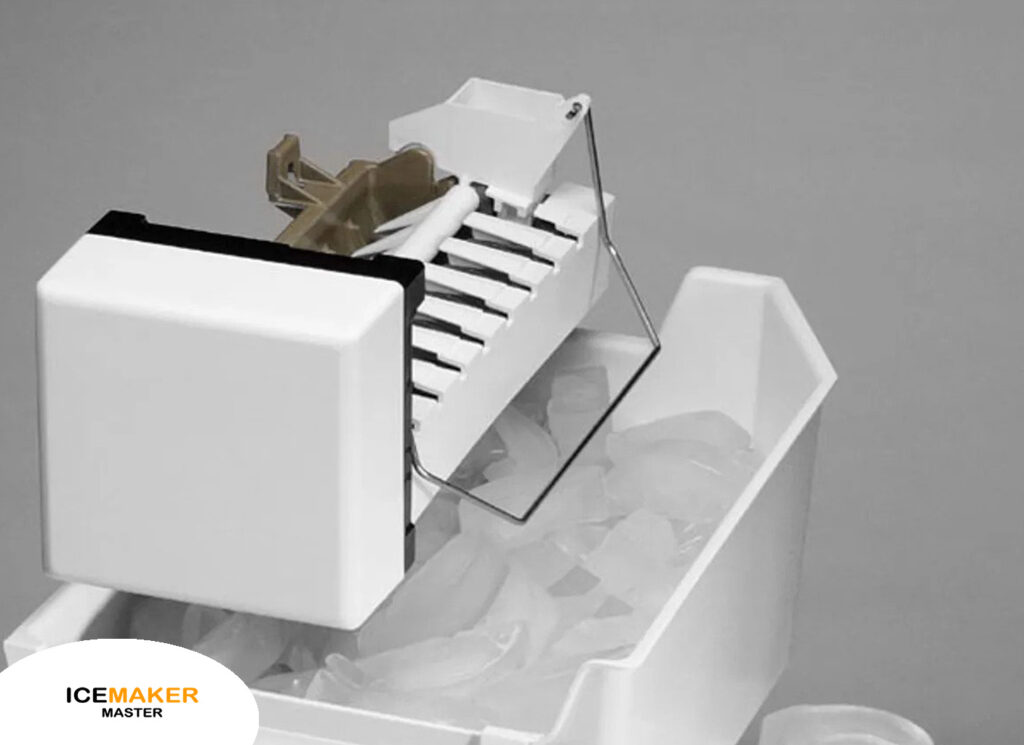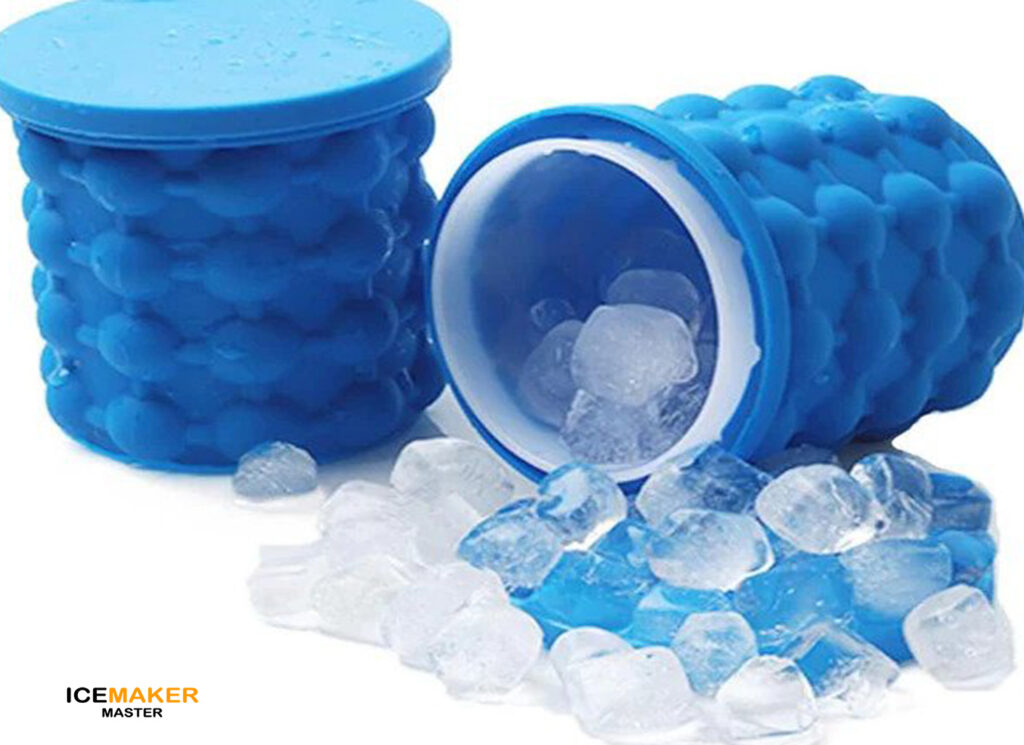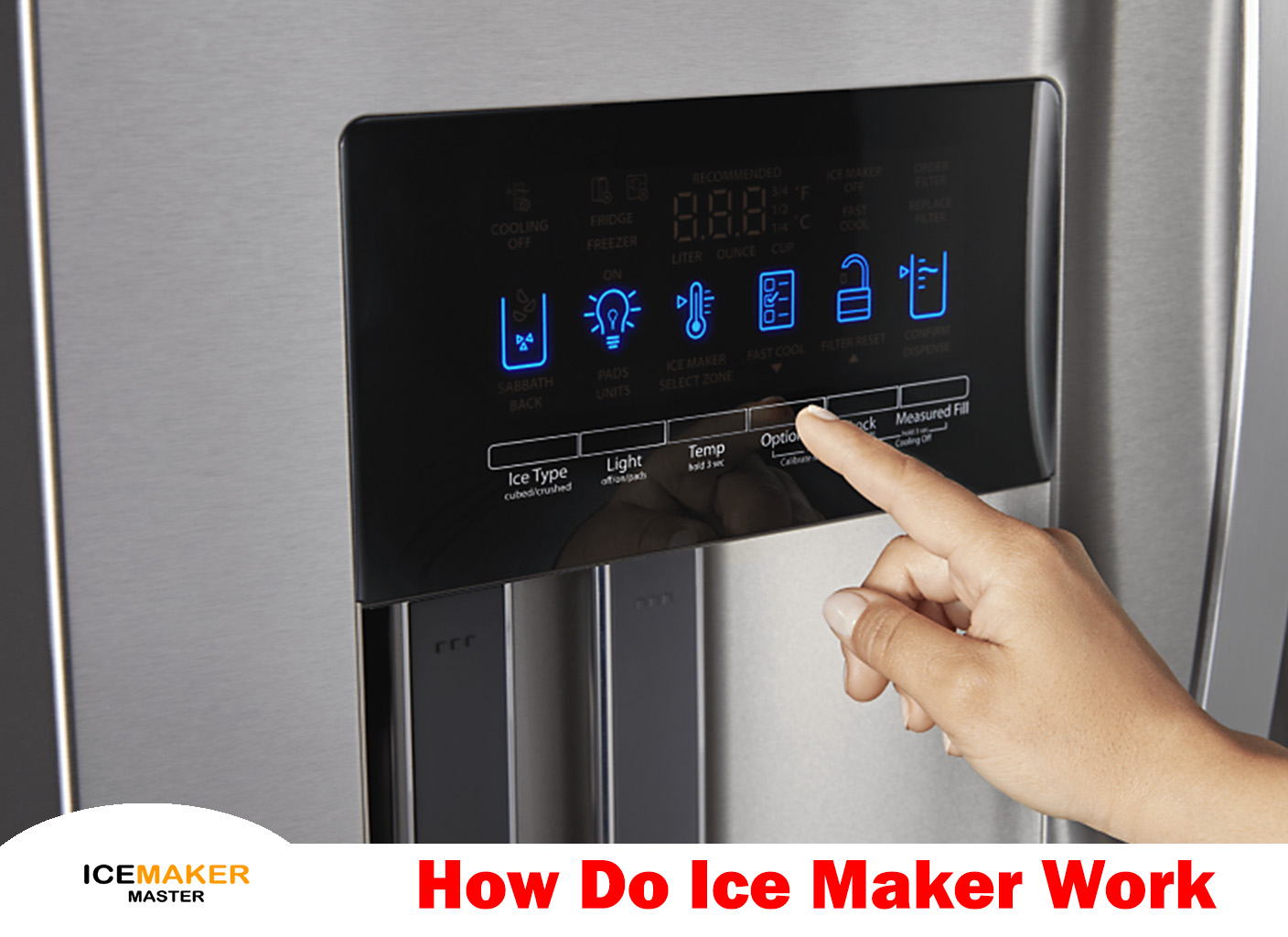In a world where convenience comes first, the humble ice maker emerges as a silent hero, transforming our daily lives with its simple yet indispensable functionality. This simple machine in our fridges quickly chills things, giving us instant coolness. People generally ask how do ice maker work.
The ice maker is more than just a simple machine. It is a clever creation that uses water, temperature, and mechanics to make perfect ice cubes. Whether enhancing the crispness of a refreshing beverage or preserving perishables, the ice maker stands as a testament to the elegance of modern appliance design.
In this blog, I will tell you the step by step process of the working of the ice maker. Also, I will tell you the science behind its creation of those perfectly formed ice cubes that enhance our beverages.
The Basic Elements
An ice maker is a smart machine with important parts that work well together at its center. Its key elements include-

- Water supply valve, which regulates water flow into the system.
- Ice mold, crafted from heat-conductive materials, forms the foundation for creating ice cubes.
- A thermostat monitors the temperature inside the ice mold, signaling the cooling system to commence freezing when optimal conditions are reached.
- The heating element comes into play post-freezing, ensuring easy release of ice cubes by warming the mold.
- The motorized assembly, featuring a motor and an auger, is responsible for ejecting the ice into the collection bin.
This intricate dance of components illustrates the harmonious synergy required for the ice maker to fulfill its purpose delivering perfectly chilled cubes with efficiency and precision.
Water Supply Valve
The water supply valve is a crucial part of the ice-making process, serving as the starting point for creating ice. Its primary function is to manage the flow of water into the ice maker.
When the ice maker indicates the need for more water, the valve opens, permitting a specific amount of water to enter the ice mold. This controlled entry is vital for ensuring that the ice cubes form properly within the mold.
Essentially, the water supply valve acts as the gateway, responding to the ice maker’s cues and facilitating the precise delivery of water to commence the freezing process. This careful control is really important for making ice easily and efficiently in the appliance.
Also Read - Why is my ice maker leaking water?
Filling the Ice Mold
When the water supply valve opens, it allows water to enter the ice mold, a special tray made for forming ice cubes. This ice mold is crafted from materials that easily conduct heat, ensuring that the water freezes efficiently. The design of the mold is essential for shaping the ice into perfect cubes.

As water fills the mold, its heat-conductive properties enable it to absorb the coldness from the freezing mechanism, gradually transforming into solid ice. This step is crucial in the ice-making process, as the mold’s construction and heat conductivity directly impact the quality and speed of ice formation.
Ultimately, the filling of the ice mold marks a pivotal stage, setting the foundation for the creation of well-formed and refreshing ice cubes in your appliance.
Freezing Process
At the core of the ice maker lies the thermostat, a clever device that keeps an eye on the temperature within the ice mold. This thermostat is like a smart sensor that knows exactly when the water has cooled enough to freeze into ice.
Once it senses that the water has reached the perfect freezing temperature, it sends a signal to start the cooling system. This signal kick-starts the freezing process, causing the water molecules to gradually turn into solid ice.
The thermostat’s job is crucial as it ensures the timing is just right for the water to transform into those refreshing ice cubes we want for our beverages.
Heating Element
It sounds strange but heat becomes a key player in the ice-making process. The heating element takes center stage after the water has transformed into solid ice within the mold. Its role is to gently warm the mold, reaching the delicate balance necessary for releasing the ice cubes smoothly.
This strategic application of heat prevents the cubes from stubbornly clinging to the mold, ensuring they can be effortlessly dispensed into the collection bin.

While the freezing process relies on cold temperatures, the heating element showcases the ice maker’s versatility, cleverly utilizing both heat and cold to deliver the perfectly formed and easily accessible ice cubes that add a touch of refreshment to our beverages.
Ejecting the Ice Cubes
When it’s time for the final step in making ice, the motorized part becomes the star. This assembly, typically consisting of a motor and an auger, it has the important task of expelling the ice cubes from their frozen abode.
The motor is the powerhouse, supplying the energy needed for the auger to perform its helical dance. The auger, a twisted metal rod, spins and carefully pushes the ice cubes out of the mold. This coordinated movement ensures that the ice cubes are gently released from their frozen confines and gracefully find their way into the awaiting collection bin.
It is a mechanical performance that showcases the synergy of components working together, transforming the fruits of the freezing process into the readily available ice cubes we enjoy in our drinks.
Automatic Shut-Off
To avoid making too much ice, lots of ice makers have a smart feature that turns off automatically. This ingenious mechanism serves as a built-in guardian against excess ice production by halting the ice-making process once the collection bin reaches full capacity.
Operating like a vigilant custodian, the automatic shut-off not only curtails the waste of energy but also safeguards the appliance from needless wear and tear. This thoughtful addition not only enhances the energy efficiency of the ice maker but also contributes to its longevity, sparing it from the strains of continuous operation.
Also Read - Maintenance Tips of an Ice Maker. Learn How to maintain an ice maker so that it can last for several years and you can enjoy making ice for many years without any issues.
FAQ
How does an ice maker function?
An ice maker works by combining water, a freezing mechanism, and various components to create ice cubes. It typically consists of a water supply valve, ice mold, thermostat, heating element, and a motorized assembly.
What is the role of the water supply valve?
The water supply valve controls the flow of water into the ice maker. When the ice maker signals for more water, the valve opens, allowing a specific amount of water to enter the ice mold.
What is the purpose of the thermostat in an ice maker?
The thermostat is a temperature-sensitive device that monitors the temperature inside the ice mold. When it detects optimal freezing conditions, it signals the cooling system to initiate the freezing process.
How does the motorized assembly eject the ice cubes?
The motorized assembly, often comprising a motor and an auger, is responsible for pushing the ice cubes out of the mold. The motor powers the auger, a helical metal rod that rotates and facilitates the release of the ice cubes into the collection bin.
Do all ice makers have the same components?
While the basic components like the water supply valve, ice mold, thermostat, heating element, and motorized assembly are common, specific designs and features may vary among different ice maker models and brands.
How can I maintain my ice maker for optimal performance?
Regular maintenance includes cleaning the ice mold, checking water filters, ensuring proper ventilation around the appliance, and following the manufacturer’s guidelines for upkeep. Regular maintenance contributes to the longevity and efficiency of your ice maker.
Conclusion
Overall, knowing how your ice maker works helps you better appreciate the clever engineering that gives you those cool ice cubes at the press of a button. Each part, from making the ice to using heat strategically, plays a crucial role in creating the perfect cubes for your drinks.
The next time you enjoy a cold beverage, just take a moment to think about the science happening inside your trusty ice maker. It’s like a well-organized dance of different pieces, turning a simple task into a showcase of how smart design and technology work together to make our lives a bit more convenient and enjoyable.

